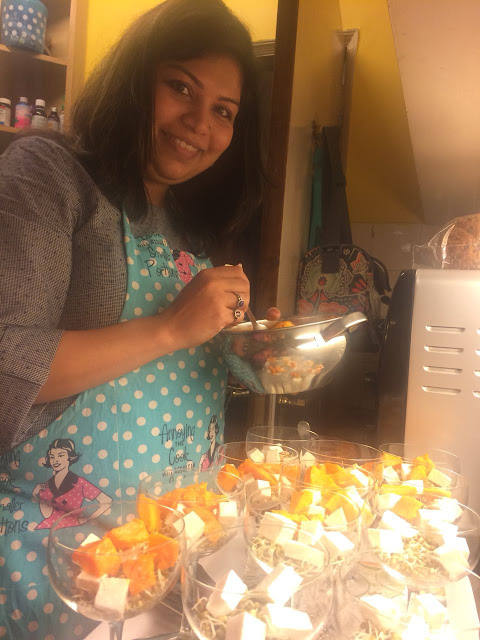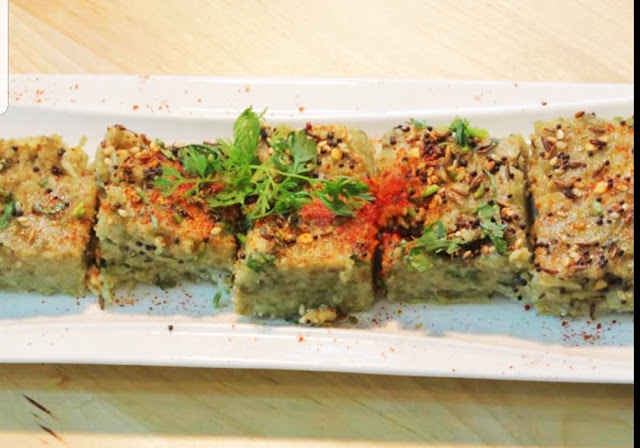Mumbai's temperature is not too cold..winter hardly ever comes..er..not like they have in the North India, where people are wrapped up in multi layers of warm clothes, and have to eat a particular kind of food to keep their body warm.
In Mumbai, just a shawl should suffice...but still, its good to celebrate winter by eating right kind of food. Yes. Market is flooded with lots of winter veggies nowadays and everybody seems excited by enjoying the flavours, and saving the winter vegetables in the form of pickles or just freezing them in their natural form.
And in winter, the flavours are authentic, colours so bright, and so is the taste, that fresh chunky bites of root vegetables, those heat'y effects of honey and ginger, those bright greens of leafy veggies and people are hungry all the time.
Truly, winter is the time to celebrate food.
Aanchal Khanna is all set for this winter with some delicious Punjabi dishes that she wants people around Mumbai to experience, some finger smacking dishes like Dhal Makhani, Gajrela, Sarson da Saag, Til Phugga and many more.
“I really can’t recollect one but there are so many beautiful memories.. Sundays, especially, my grandfather used to go to the market early morning to buy the fresh catch (Only Pomfret), come home and clean it all by himself.. I still have some fade memories of him doing it. It was like a slow happy dance. Perfecting every move.” says Aanchal, thinking aloud about her grandfather’s love for Pakodas specially of Kaddu and baigan.
Aanchal specialises in street food of Mumbai like Bharwaan Aloo, Tikki Chole, Pav Bhaji, Chilli Paneer, simple salad & Kulhad wali Gulabi Kheer. She also takes orders for small family gatherings. No fancy menu. She talks to the customers and understand the type of food they are looking for and accordingly suggests.
“I am still learning and exploring. But I see to it that I learn everything from them to a T. I have just started and I keep updating the menu. The snacks and Laddu menu is what I am working on. I strongly feel that the new generation (torch bearers of our culture and tradition) need to be exposed more to what we ate and what our grandparents ate or still eat. It is more local and sustainable which also means it is healthy.” She believe that as adults it is our responsibility to introduce our children to such food, that is nourishing and healthy.”
On her last visit to Bali and KL, she feasted on Nasi Goreng and Mei Goreng. “We were put up in Kuta,in Bali, just across the beach. Breakfast was usual fruits, eggs, pancakes, waffles. But I couldn’t really explore the food around the city because my trip was cut short for personal reasons.” She is a big fan of stir fried veggies/chicken and one pot meals but her Punjabi khaandhan and genes always pull her back to having elaborate spread of Khaana leaving her few opportunities to cook one pot meals.
Aanchal Khanna is happy to share her recipe Makhana Kheer (Foxnut Pudding)
1. Roast 50gms (approx. 4 fist full) Makhanas in 3tsp of ghee.
2. Stir continuously till it becomes toasty and changes colour slightly.
3. Turn off the flame.
4. Carefully add 300-400 ml milk while the flame is off. ( cow’s milk has been used. Full cream could be another option)
5. Turn on the flame and keep stirring on low flame.
6. Let the mixture of milk and makhanas boil for 5 mins.
7. Add 2 pods of cardamom.
8. Add soaked and chopped nuts of your choice and cook for another 5-7mins.
9. If you are using raisins, add it in the end after putting off the flame.
10. Add 3-4 tbsp sugar and cook for 2 mins.
11. Keep a check on the consistency of kheer as per your liking.
12. You may add more milk if it is too thick for you.
13. Serve it hot or chilled.
Tip: add Kesar (saffron while boiling milk, that will give a beautiful color to the kheer.
You can follow her on her Instagram Handle @ThePickledStory
or Watsapp at 9999448052










































